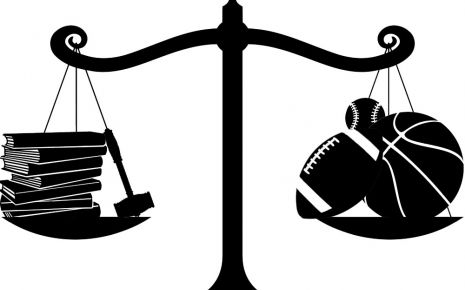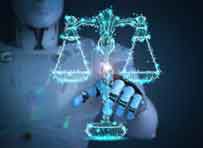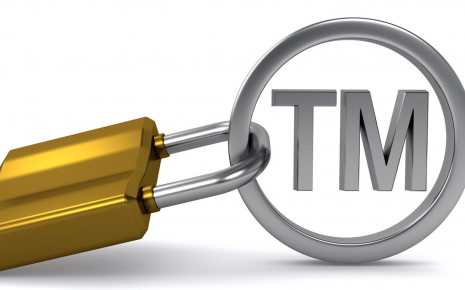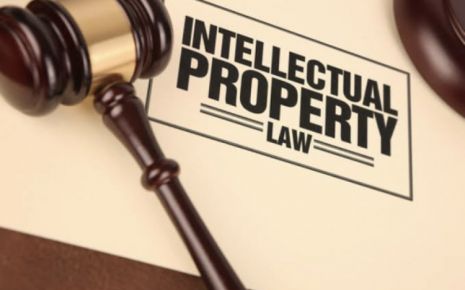The Right Space Between Copyright And Cyberspace: Discussing The Jurisdiction Of Copyright In Cyberspace In Indian Context
The importance of copyright protection and data protection has gained prominence
as we move into the new era of software technology and the ever-expanding
internet and global web. Today's copyright laws protect a wide range of
creations, including films, music recordings, computer programmes, databases,
and compilations as well as literary, dramatic, and aesthetic works.
While the content community, which consists of researchers, educators, artists, publishers, and the music and entertainment industry, has been able to grow its markets at a rate never before possible thanks to the Internet, the same technology also enables any anonymous and invisible pirate to copy and distribute anything that is available on the Internet in an instant.
The content industry is undoubtedly worried due to significant losses caused by online intellectual property infringement on a global scale. Users of the Internet cannot be viewed as a collective, and it is crucial to distinguish between the liability of those who grant people and businesses access to the Internet and that of individual users. Internet has two sides that the business community must consider. On the one hand, businesses seek further advancements in network technologies to improve the viability and caliber of the delivery of digital material.
On the other hand, as technology has developed, there have been more instances of IPR infringement. The internet is praised as one of the greatest inventions since the industrial revolution and an essential business channel for the foreseeable future. Experience and research have shown that the Internet is essential for many aspects of life, including business operations. Under these conditions, there are more and more appeals for finding solutions to the growing copyright threats rather than abandoning the internet.
COPYRIGHT LAW
Copyright is nothing but the rights granted to creators for their literary and artistic works. The types of works that fall under the purview of copyright include literary works like novels, poems, plays, reference works, newspapers, and computer programmes; databases; motion pictures, musical compositions, and dance performances; artistic works like paintings, drawings, photographs, and sculpture; architecture; and advertisements, maps, and technical drawings.
The aim of copyright is to safeguard artists labour, promote the creation of creative works, and grant authors, composers, and directors the sole right to reproduce. Original works of literature, theatre, music, art, cinematography, sound recordings, and computer software are all protected by copyright. Since copyrights are considered intellectual property, they are more easily and quickly transferred from one country to another than other types of property.
Copyright work today includes a wide range of industries, including the production and distribution of books, magazines, and newspapers, media of entertainment such as dramatic and musical works for performances, publication of musical works and cinema, broadcasting, etc. The development of technology has simplified and made copyrighted content simple to duplicate.
CYBERSPACE
Although theoretically simply existing in computer memory, cyberspace is a virtual environment that is alive and interactive. As a result, the legal system needs to tighten up and catch up. Although this new frontier will never cease developing, it may still be too early to decide how to manage it. But many are worried about defining appropriate behaviour in this new landscape as it gets more integrated into (and vital to) our daily lives.
These days, it is possible to exchange, distribute, circulate, and save electronic copies of voice files, music files, images, money, news stories, clips, biodata, letters, and many other sorts of information. Thus, the modern generation is heavily dependent on computer technology due to the simple interface and efficient processes carried out in an electric manner through computers. Through this, the deadliest kind of criminality known as "Cybercrime" poses a menace.
IPR AND CYBER LAW- HOW FAR THEY ALIGN?
The IT Act of 2000 covers cybercrimes that involved the misuse of technology. However, the protection of intellectual property and related issues have not been covered. The Indian Trademark Act of 1999 and the Copyright Act of 1957 are similarly quiet on matters relating to online Trademark and Copyright infringement.
Although the Copyright Act protects computer programmes, it does not offer any remedies for online software piracy. Additionally, the IT Act does not expressly penalize cybersquatting. It is also very important to note that while IPR and Cyber Law align in several areas, they also have distinct aspects.
Cyber Law encompasses a broader range of legal issues related to internet technologies, online transactions, cybersecurity, and electronic communications. IPR, on the other hand, specifically focuses on the legal protection and enforcement of intellectual property rights. However, the two fields often intersect and work in tandem to address legal challenges in the digital era.
COPYRIGHTS IN CYBERSPACE
When indexing a website, do search engines make illicit copies of the content? Are Internet service providers accountable for content protected by copyright? Internet browsing storing temporary files constitutes copyright infringement? The question of internet nationality and jurisdiction is also a significant complexity because something that is legal in one country could be illegal in another.
Finding solutions to the aforementioned problems entails determining whether courts have jurisdiction over people violating copyrights online from other countries, whether temporary copies made by a user's computer constitute "reproduction," and whether granting access to already-existing web content qualifies as "communication to the public."
If internet intermediaries: like internet access and hosting companies—are directly or indirectly responsible for users' illegal behaviour. The Indian Copyright Law's statutory provisions do not address every one of these concerns. However, the courts have begun intervening and working to offer clarity and remedy such problems.6
JURISDICTION
Issues pertaining to jurisdiction primarily revolve around procedural rules rather than copyright laws. However, these challenges emerge as a result of the internet's nature and pose significant obstacles in copyright-related matters within the realm of cyberspace. The internet, being boundaryless, presents a scenario where copyright infringements can occur across different geographical locations.
For instance, envision a situation where you have published a literary work in Delhi, India, and suddenly come across a website in South America that utilizes your work to promote and sell its products. This practical predicament leaves us unsure of where to file a lawsuit for copyright infringement, given that the two parties only share a virtual connection.
In typical circumstances, the jurisdiction for a legal suit is determined by the residence of the defendant or the location where the cause of action originated. However, in the case of cyberspace, which lacks physical boundaries, instantaneous long-distance communication is established with anyone who has access to a website. Adhering to the traditional principle, a single transaction may involve the laws of multiple jurisdictions.
The determination of jurisdiction in copyright matters in India is governed by the Civil Procedure Code and the Copyright Act. The case of Banyan Tree Holdings (P) Ltd. v. Murali Krishna Reddy shed light on the basis for jurisdiction in internet-based intellectual property infringement cases. In this particular case, neither party was located in Delhi. However, jurisdiction was established on the grounds that the defendant conducted business in Delhi through their website, thereby giving rise to a cause of action in Delhi.
The court conducted a thorough analysis of different jurisdictions and concluded that the jurisdiction of the forum court, based on the cause of action, is not automatically established solely due to the interactivity of a website accessible within the forum state. Instead, the court emphasized that the nature of the permissible activity and whether it leads to a commercial transaction should be examined.
Indian courts have frequently referred to foreign doctrines and, in this specific case, they determined that a forum would have jurisdiction if the plaintiff could demonstrate prima facie evidence that the defendant specifically targeted the forum state, resulting in injury or harm to the plaintiff within that particular state.
CONCLUSION
The expansion of the Internet, particularly the World Wide Web (WWW), has created a new realm known as cyberspace, where copyright exploitation takes place. The examination of copyrights in cyberspace reveals a combination of new opportunities and threats. Cyber technology has provided novel avenues for businesses and individuals to commercialize and exploit copyrights.
These opportunities have opened doors for global expansion and wider market reach, offering significant potential for revenue generation and other forms of returns. However, alongside these opportunities, there are concurrent threats that even undermine the fundamental rights of copyright holders. The scale of these threats is unparalleled, with technological advancements enabling not only easier piracy but also effortless distribution of pirated works to the masses with just a click of a button.
These threats often outweigh the benefits offered by cyberspace, necessitating increased regulation to safeguard copyrights. The current state of cyber anarchy has presented numerous legal challenges for regulators. The ubiquitous nature of the Internet has made many of these challenges international in scope, requiring the involvement of international copyright frameworks to effectively regulate cyberspace.
As it stands, cyberspace remains largely unregulated, and various online transactions surpass national regulatory controls. The technological feasibility of bypassing national governments or regulations raises doubts about the effectiveness of any single domestic regime or a limited group of domestic regimes in effectively regulating cyberspace.
Furthermore, many domestic copyright frameworks are relatively new and may be ill-prepared to address copyright issues in the context of cyberspace. This highlights the need for increased international cooperation to regulate cyberspace These threats often outweigh the benefits offered by cyberspace, necessitating increased regulation to safeguard copyrights.
The current state of cyber anarchy has presented numerous legal challenges for regulators. The ubiquitous nature of the Internet has made many of these challenges international in scope, requiring the involvement of international copyright frameworks to effectively regulate cyberspace. As it stands, cyberspace remains largely unregulated, and various online transactions surpass national regulatory controls.
The technological feasibility of bypassing national governments or regulations raises doubts about the effectiveness of any single domestic regime or a limited group of domestic regimes to effectively regulating cyberspace. Furthermore, many domestic copyright frameworks are relatively new and may be ill-prepared to address copyright issues in the context of cyberspace. This highlights the need for increased international cooperation to regulate cyberspace.
In the realm of copyrights, numerous legal principles need to be developed or settled to determine the legality of specific transactions in question. Many pressing questions pertaining to copyrights in cyberspace must be resolved at an international level. The lack of internationally agreed-upon principles regarding copyrights in cyberspace creates room for divergent domestic standards.
While the content community, which consists of researchers, educators, artists, publishers, and the music and entertainment industry, has been able to grow its markets at a rate never before possible thanks to the Internet, the same technology also enables any anonymous and invisible pirate to copy and distribute anything that is available on the Internet in an instant.
The content industry is undoubtedly worried due to significant losses caused by online intellectual property infringement on a global scale. Users of the Internet cannot be viewed as a collective, and it is crucial to distinguish between the liability of those who grant people and businesses access to the Internet and that of individual users. Internet has two sides that the business community must consider. On the one hand, businesses seek further advancements in network technologies to improve the viability and caliber of the delivery of digital material.
On the other hand, as technology has developed, there have been more instances of IPR infringement. The internet is praised as one of the greatest inventions since the industrial revolution and an essential business channel for the foreseeable future. Experience and research have shown that the Internet is essential for many aspects of life, including business operations. Under these conditions, there are more and more appeals for finding solutions to the growing copyright threats rather than abandoning the internet.
COPYRIGHT LAW
Copyright is nothing but the rights granted to creators for their literary and artistic works. The types of works that fall under the purview of copyright include literary works like novels, poems, plays, reference works, newspapers, and computer programmes; databases; motion pictures, musical compositions, and dance performances; artistic works like paintings, drawings, photographs, and sculpture; architecture; and advertisements, maps, and technical drawings.
The aim of copyright is to safeguard artists labour, promote the creation of creative works, and grant authors, composers, and directors the sole right to reproduce. Original works of literature, theatre, music, art, cinematography, sound recordings, and computer software are all protected by copyright. Since copyrights are considered intellectual property, they are more easily and quickly transferred from one country to another than other types of property.
Copyright work today includes a wide range of industries, including the production and distribution of books, magazines, and newspapers, media of entertainment such as dramatic and musical works for performances, publication of musical works and cinema, broadcasting, etc. The development of technology has simplified and made copyrighted content simple to duplicate.
CYBERSPACE
Although theoretically simply existing in computer memory, cyberspace is a virtual environment that is alive and interactive. As a result, the legal system needs to tighten up and catch up. Although this new frontier will never cease developing, it may still be too early to decide how to manage it. But many are worried about defining appropriate behaviour in this new landscape as it gets more integrated into (and vital to) our daily lives.
These days, it is possible to exchange, distribute, circulate, and save electronic copies of voice files, music files, images, money, news stories, clips, biodata, letters, and many other sorts of information. Thus, the modern generation is heavily dependent on computer technology due to the simple interface and efficient processes carried out in an electric manner through computers. Through this, the deadliest kind of criminality known as "Cybercrime" poses a menace.
IPR AND CYBER LAW- HOW FAR THEY ALIGN?
The IT Act of 2000 covers cybercrimes that involved the misuse of technology. However, the protection of intellectual property and related issues have not been covered. The Indian Trademark Act of 1999 and the Copyright Act of 1957 are similarly quiet on matters relating to online Trademark and Copyright infringement.
Although the Copyright Act protects computer programmes, it does not offer any remedies for online software piracy. Additionally, the IT Act does not expressly penalize cybersquatting. It is also very important to note that while IPR and Cyber Law align in several areas, they also have distinct aspects.
Cyber Law encompasses a broader range of legal issues related to internet technologies, online transactions, cybersecurity, and electronic communications. IPR, on the other hand, specifically focuses on the legal protection and enforcement of intellectual property rights. However, the two fields often intersect and work in tandem to address legal challenges in the digital era.
COPYRIGHTS IN CYBERSPACE
When indexing a website, do search engines make illicit copies of the content? Are Internet service providers accountable for content protected by copyright? Internet browsing storing temporary files constitutes copyright infringement? The question of internet nationality and jurisdiction is also a significant complexity because something that is legal in one country could be illegal in another.
Finding solutions to the aforementioned problems entails determining whether courts have jurisdiction over people violating copyrights online from other countries, whether temporary copies made by a user's computer constitute "reproduction," and whether granting access to already-existing web content qualifies as "communication to the public."
If internet intermediaries: like internet access and hosting companies—are directly or indirectly responsible for users' illegal behaviour. The Indian Copyright Law's statutory provisions do not address every one of these concerns. However, the courts have begun intervening and working to offer clarity and remedy such problems.6
JURISDICTION
Issues pertaining to jurisdiction primarily revolve around procedural rules rather than copyright laws. However, these challenges emerge as a result of the internet's nature and pose significant obstacles in copyright-related matters within the realm of cyberspace. The internet, being boundaryless, presents a scenario where copyright infringements can occur across different geographical locations.
For instance, envision a situation where you have published a literary work in Delhi, India, and suddenly come across a website in South America that utilizes your work to promote and sell its products. This practical predicament leaves us unsure of where to file a lawsuit for copyright infringement, given that the two parties only share a virtual connection.
In typical circumstances, the jurisdiction for a legal suit is determined by the residence of the defendant or the location where the cause of action originated. However, in the case of cyberspace, which lacks physical boundaries, instantaneous long-distance communication is established with anyone who has access to a website. Adhering to the traditional principle, a single transaction may involve the laws of multiple jurisdictions.
- The laws of the country where the user resides
- The laws of the country hosting the server involved in the transaction; and
- The laws of the state or nation that apply to the individual or business engaging in the transaction.
The determination of jurisdiction in copyright matters in India is governed by the Civil Procedure Code and the Copyright Act. The case of Banyan Tree Holdings (P) Ltd. v. Murali Krishna Reddy shed light on the basis for jurisdiction in internet-based intellectual property infringement cases. In this particular case, neither party was located in Delhi. However, jurisdiction was established on the grounds that the defendant conducted business in Delhi through their website, thereby giving rise to a cause of action in Delhi.
The court conducted a thorough analysis of different jurisdictions and concluded that the jurisdiction of the forum court, based on the cause of action, is not automatically established solely due to the interactivity of a website accessible within the forum state. Instead, the court emphasized that the nature of the permissible activity and whether it leads to a commercial transaction should be examined.
Indian courts have frequently referred to foreign doctrines and, in this specific case, they determined that a forum would have jurisdiction if the plaintiff could demonstrate prima facie evidence that the defendant specifically targeted the forum state, resulting in injury or harm to the plaintiff within that particular state.
CONCLUSION
The expansion of the Internet, particularly the World Wide Web (WWW), has created a new realm known as cyberspace, where copyright exploitation takes place. The examination of copyrights in cyberspace reveals a combination of new opportunities and threats. Cyber technology has provided novel avenues for businesses and individuals to commercialize and exploit copyrights.
These opportunities have opened doors for global expansion and wider market reach, offering significant potential for revenue generation and other forms of returns. However, alongside these opportunities, there are concurrent threats that even undermine the fundamental rights of copyright holders. The scale of these threats is unparalleled, with technological advancements enabling not only easier piracy but also effortless distribution of pirated works to the masses with just a click of a button.
These threats often outweigh the benefits offered by cyberspace, necessitating increased regulation to safeguard copyrights. The current state of cyber anarchy has presented numerous legal challenges for regulators. The ubiquitous nature of the Internet has made many of these challenges international in scope, requiring the involvement of international copyright frameworks to effectively regulate cyberspace.
As it stands, cyberspace remains largely unregulated, and various online transactions surpass national regulatory controls. The technological feasibility of bypassing national governments or regulations raises doubts about the effectiveness of any single domestic regime or a limited group of domestic regimes in effectively regulating cyberspace.
Furthermore, many domestic copyright frameworks are relatively new and may be ill-prepared to address copyright issues in the context of cyberspace. This highlights the need for increased international cooperation to regulate cyberspace These threats often outweigh the benefits offered by cyberspace, necessitating increased regulation to safeguard copyrights.
The current state of cyber anarchy has presented numerous legal challenges for regulators. The ubiquitous nature of the Internet has made many of these challenges international in scope, requiring the involvement of international copyright frameworks to effectively regulate cyberspace. As it stands, cyberspace remains largely unregulated, and various online transactions surpass national regulatory controls.
The technological feasibility of bypassing national governments or regulations raises doubts about the effectiveness of any single domestic regime or a limited group of domestic regimes to effectively regulating cyberspace. Furthermore, many domestic copyright frameworks are relatively new and may be ill-prepared to address copyright issues in the context of cyberspace. This highlights the need for increased international cooperation to regulate cyberspace.
In the realm of copyrights, numerous legal principles need to be developed or settled to determine the legality of specific transactions in question. Many pressing questions pertaining to copyrights in cyberspace must be resolved at an international level. The lack of internationally agreed-upon principles regarding copyrights in cyberspace creates room for divergent domestic standards.
Law Article in India
Legal Question & Answers
Lawyers in India - Search By City
LawArticles
How To File For Mutual Divorce In Delhi

How To File For Mutual Divorce In Delhi Mutual Consent Divorce is the Simplest Way to Obtain a D...
Increased Age For Girls Marriage

It is hoped that the Prohibition of Child Marriage (Amendment) Bill, 2021, which intends to inc...
Facade of Social Media

One may very easily get absorbed in the lives of others as one scrolls through a Facebook news ...
Section 482 CrPc - Quashing Of FIR: Guid...

The Inherent power under Section 482 in The Code Of Criminal Procedure, 1973 (37th Chapter of t...
The Uniform Civil Code (UCC) in India: A...

The Uniform Civil Code (UCC) is a concept that proposes the unification of personal laws across...
Role Of Artificial Intelligence In Legal...

Artificial intelligence (AI) is revolutionizing various sectors of the economy, and the legal i...








Please Drop Your Comments